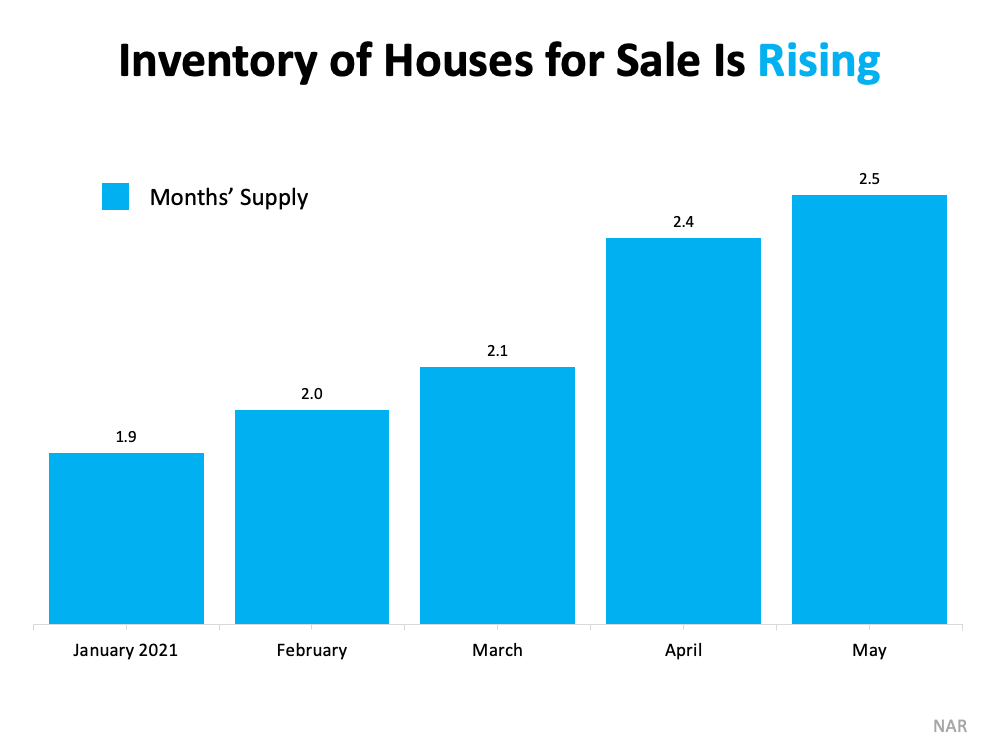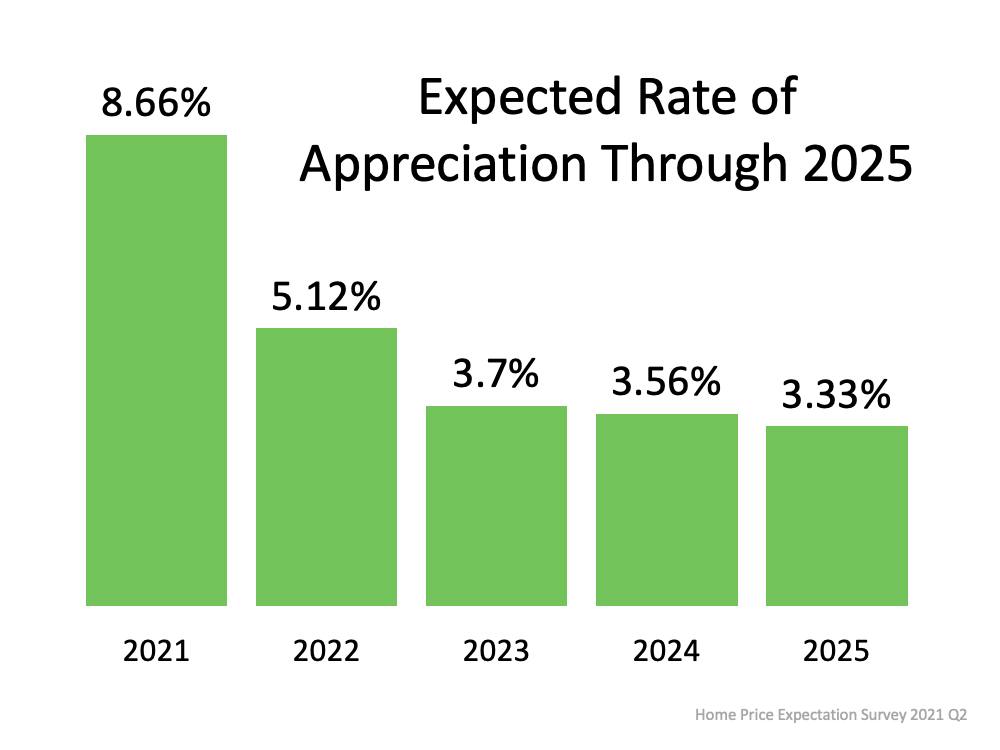Why This Isn't Your Typical Summer Housing Market
In real estate, its normal to see ebbs and flows in the market. Typically, the summer months are slower-paced than the traditionally busy spring. But this isn't a typical summer. As the economy rebounds and life is returning to normal, the real estate market is expected to have an unusually strong summer season.
Here's how this summer is stacking up against the norm and what it means for you.
Inventory is increasing.
According to the latest Existing Home Sales Report from the National Association of Realtors (NAR), inventory levels have been rising since February of this year. Looking at the graph below, there's a clear upward trend, as shown in the green bars. Currently, there's roughly a 2.5 months supply of homes for sale. And while inventory is trending up as more houses are coming to the market, its still much lower than several of the previous summers, as the orange bars indicate. If you're looking to buy, some relief is on the way in the form of more homes coming to the market. Just remember, we still have less inventory than the norm, so be patient in your search.
If you're looking to buy, some relief is on the way in the form of more homes coming to the market. Just remember, we still have less inventory than the norm, so be patient in your search.
If you're thinking of selling, now is the time. Work with your agent to list your house before it has more competition on the market.
Time on the market is still shorter than normal.
Unlike the typical summer trend, time on the market is moving at the fastest speed we've seen since NAR started collecting this survey-based information in 2011. The most recent Realtors Confidence Index shows that the average home is on the market for just 17 days, as shown in green in the graph below. This means houses are selling at a much faster pace than a typical summer, which the orange bars represent. If you're looking to buy, this means you need to be prepared to move fast. Brace for a quick pace and rely on your agent to stay in the know on the available homes in your area.
If you're looking to buy, this means you need to be prepared to move fast. Brace for a quick pace and rely on your agent to stay in the know on the available homes in your area.
If you're thinking of selling, data shows your house will likely sell quickly. If you're worried about where you'll go once your house sells, consider a newly built home as a good way to move up.
Price appreciation is still rising.
The last big factor making this an unusually strong market this summer is home price appreciation. According to the State House Price Index from the Federal Housing Finance Agency (FHFA), were currently experiencing double-digit house price appreciation and have an average of 12.6% appreciation across the country. The graph below uses data from NAR to show a more granular view of how prices have changed month-to-month over the past few years. The green bars show the current price appreciation were experiencing today. Our current levels are well above what we've seen in recent summers, shown by the orange bars. If you're looking to buy, competition and bidding wars are driving prices up. Getting pre-approved on show the seller you're serious and help you know what you can afford. Once you do, work with your agent to make a strong offer that stands out.
If you're looking to buy, competition and bidding wars are driving prices up. Getting pre-approved on show the seller you're serious and help you know what you can afford. Once you do, work with your agent to make a strong offer that stands out.
If you're thinking of selling, seize this opportunity to use your additional equity from this price appreciation to power your next move.
Bottom Line
This isn't a typical summer. Whether you're buying or selling, lets connect to talk about how you can capitalize on todays market conditions to sell your house or find your dream home.













